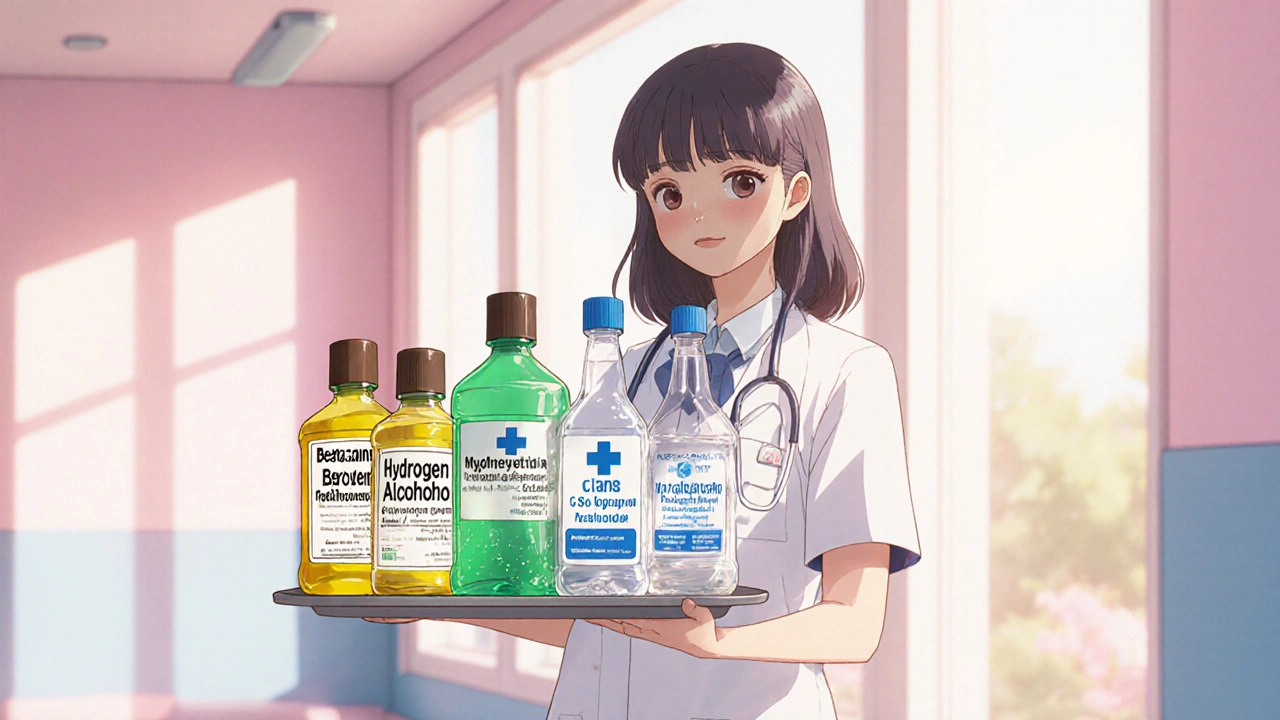When dealing with cuts, scrapes, or surgical sites, wound antiseptics, topical agents designed to kill or inhibit microorganisms on injured tissue. Also called antiseptic wound care, they form the first line of defense against infection. Wound antiseptics encompass a range of chemicals, each with its own spectrum of activity, irritation potential, and ideal use case. Choosing the right product isn’t a guess; it requires understanding the type of wound, the likely pathogens, and how the antiseptic interacts with the body’s own healing processes. In short, effective wound care requires proper antiseptic selection, and that decision shapes how quickly tissue repairs and how likely an infection will develop.
Among the many options, four agents dominate the market. Chlorhexidine, a broad‑spectrum, cationic bisbiguanide that binds to skin proteins and provides sustained antimicrobial activity is prized for its low toxicity and lasting effect, making it a go‑to for pre‑operative skin prep. Povidone‑iodine, an iodine‑complex that releases free iodine to rapidly kill bacteria, viruses, and fungi shines in emergency settings because it works quickly even on heavily contaminated wounds, though it can stain skin. Hydrogen peroxide, an oxidizing agent that produces free radicals to disrupt microbial cell walls is often used for shallow cuts; its bubbling action signals oxygen release, but repeated use can delay healing by damaging new tissue. Finally, Silver sulfadiazine, a silver‑based cream that releases silver ions to inhibit bacterial enzymes is the standard for burn wounds, offering deep penetration and a broad antimicrobial range while minimizing systemic absorption. Each of these antiseptics influences bacterial load differently, and their choice hinges on factors like wound depth, moisture level, patient allergies, and required duration of action.
Beyond the chemistry, practical tips matter. Always clean the wound with sterile saline before applying any antiseptic; a dirty surface reduces effectiveness. Apply the product in a thin layer, allowing it to dry unless the label advises a dressing overlay. Watch for signs of irritation—redness, increased pain, or swelling may signal an adverse reaction, prompting a switch to a gentler agent. For chronic or large wounds, consult a healthcare professional about using advanced dressings that combine antiseptic action with moisture‑balance technology. Below you’ll find a curated list of articles that dive deeper into each antiseptic, compare them side‑by‑side, and offer real‑world guidance on when and how to use them for optimal healing.

A detailed comparison of Betadine (povidone iodine) with common antiseptic alternatives, covering effectiveness, safety, costs, and best-use scenarios.